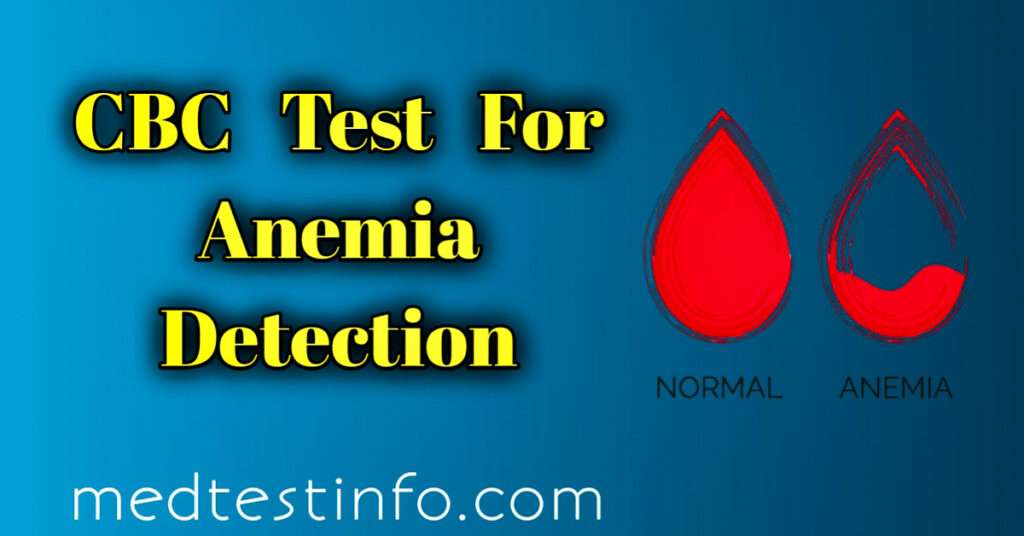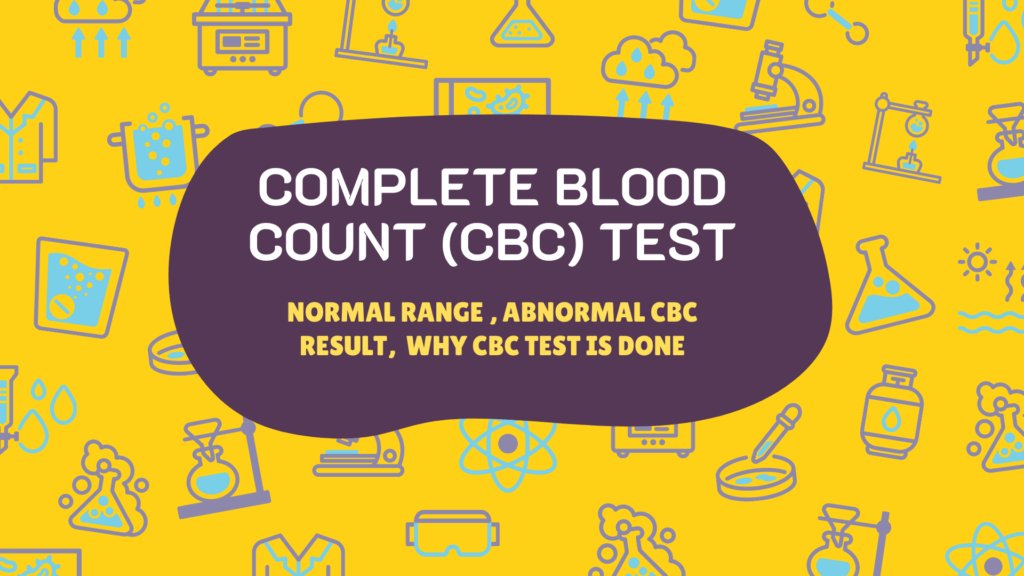
Overview
Anemia is an illness that affects millions of people worldwide. People get this disease when they lack healthy red blood cells to get enough oxygen to their tissues. Common symptoms include fatigue, lack of strength, a pale appearance, and difficulty breathing. A CBC test is one of the most straightforward and efficient techniques for detecting anemia.
This condition isn’t just about feeling tired; it could indicate more significant issues such as nutritional deficiencies, persistent health problems, or genetic influences. Iron deficiency often leads to anemia, but it can also arise from a lack of vitamin B12, folate, or problems with bone marrow. It’s essential to uncover the root cause by conducting tests like CBC, ferritin, or other lab work to ensure we get the correct diagnosis and treatment.
If not appropriately treated, anemia can lead to significant problems, including heart issues, developmental delays in children, and reduced productivity in adults. With the proper support, such as adjustments to diet, supplements, or medical treatments, many types of anemia can be managed effectively. Highlighting its symptoms and the available diagnostic tools may convince individuals to seek early care, which can significantly improve their quality of life.
What Is A CBC Test?
A Complete Blood Count (CBC) is a routine blood test that counts various components of your blood, including red blood cells (RBCs), white blood cells (WBCs), hemoglobin, hematocrit, and platelets. While it is often used to assess overall health, the CBC test for anemia focuses on your RBC count, hemoglobin levels, and hematocrit percentage. These values assist healthcare providers in determining if your red blood cells are working correctly and in sufficient quantities to supply your body’s oxygen needs.
In addition to being part of routine check-ups, the CBC test is essential in screening for anemia, which can help detect the problem early, often before severe symptoms emerge.

Essential Components Of A CBC Test For Anemia Identification
The CBC test evaluates various elements of your blood, with the following being essential for detecting anemia:
- Red blood cells (RBCs): Red blood cells, or RBCs, are vital in transporting oxygen around the body. A low number of red blood cells is often a sign of anemia.
- Hemoglobin: Hemoglobin, an iron-containing protein in red blood cells, delivers oxygen from the lungs to various body parts. Low hemoglobin levels are a significant indicator of anemia and may lead to tissue oxygen deprivation.
- Hematocrit: The hematocrit measurement indicates the proportion of red blood cells in your blood. A low hematocrit value indicates anemia since there aren’t enough red blood cells in circulation.
The CBC test results provide healthcare professionals with a comprehensive overview of your blood health, enabling them to identify the presence of anemia and its specific type.
Different Types Of Anemia Detected By CBC Test
Anemia refers to various conditions, each with its causes and remedies. The CBC test can assist in determining which type of anemia a patient may have:
- Iron Deficiency Anemia: The most prevalent type of anemia develops when your body lacks sufficient iron to generate hemoglobin. In such circumstances, the CBC test often reveals low hemoglobin and hematocrit levels, prompting further testing, such as the anemia panel blood test, for confirmation.
- Vitamin deficiency Anemia: A shortage of vitamin B12 or folate can cause aberrant RBC production, which leads to anemia. The CBC test can detect increased red blood cells, which could indicate this disease.
- Chronic disease Anemia: Kidney disease, cancer, and other chronic conditions can all cause anemia. The CBC test is frequently included in the anemia profile test, which aids in detecting this condition and guides additional diagnostic testing.
- Aplastic Anemia: Aplastic Anemia is uncommon but severe, caused by the body’s inability to create enough blood cells. A CBC test will reveal very low amounts of RBCs, WBCs, and platelets in such circumstances.
Symptoms That Prompt A CBC Test For Anemia
Anemia frequently appears with several symptoms, which may suggest that it is time to be checked. If you’re having any of the following symptoms, a CBC test may be the best way to establish whether you have anemia:
- Chronic tiredness or weakness
- Pale or yellowish skin.
- Dizziness or lightheadedness.
- Irregular heartbeats.
- Shortness of breath, particularly during activity.
- Cold fingers and toes
A complete blood count (CBC) test can assist your doctor in determining whether these symptoms are caused by anemia or another medical issue. Early identification with a simple anemia panel blood test can prevent further consequences and allow for prompt treatment.
How To Interpret CBC Test Results For Anemia
After you’ve performed the CBC test, your healthcare professional will review the results and explain whether they indicate anemia. Typical findings in a CBC test that point to anemia are:
- Low hemoglobin levels (usually less than 13.5 grams/dL for men and 12 grams/dL for women).
- A low RBC count indicates fewer red blood cells in your system.
- Low hematocrit values indicate a lower proportion of RBCs in total blood volume.
In some situations, the CBC test findings may necessitate additional testing, such as an anemia profile test or other specialized diagnostic procedures, to determine the precise cause and severity of anemia.
Treatment And Prevention After A CBC Test For Anemia
The kind of anemia diagnosed by the CBC test determines the course of treatment. For example, iron deficiency anemia can be treated with iron supplements and dietary adjustments, whereas vitamin deficiency anemia can be handled with B12 or folate supplements. Managing anemia caused by chronic disease requires addressing the underlying issue.
Preventive steps may include:
- Iron-rich diets include spinach, red meat, and beans.
- Vitamin B12 and folate supplements are recommended, particularly for people at risk of deficiency.
- Regular screenings, including routine anemia panel blood tests, are essential if you are prone to chronic conditions.
Conclusion
The Complete Blood Count (CBC) test is essential for identifying and managing anemia and providing important information about your blood health. If you’re feeling worn out or facing more serious challenges like trouble breathing, this test can help you catch things early and get the proper support. If you have anemia or have any related worries, it’s a good idea to talk to your healthcare provider about getting a CBC test. Finding and caring for issues early can help avoid problems and enhance your overall well-being.
Understanding your CBC results and addressing potential issues on time can improve your quality of life. Getting regular screenings not only assists in managing anemia but also plays a significant role in enhancing your overall long-term health. Taking care of ourselves today leads to a brighter and healthier future.
Frequently Asked Questions (FAQs)
A Complete Blood Count (CBC) test shows essential signs of iron-deficiency anemia. It usually indicates low hemoglobin levels, a decrease in hematocrit, and smaller-than-usual red blood cells (microcytosis). Moreover, the Mean Corpuscular Volume (MCV) tends to be lower, indicating that the red blood cells are smaller. This information supports healthcare providers in diagnosing and understanding the severity of iron-deficiency anemia.
The two tests that people often use to check for anemia are:
A Complete Blood Count (CBC) tests look at hemoglobin, hematocrit, and red blood cell indices to help identify anemia.
The ferritin test looks at the iron levels stored in your body, helping to determine if you have iron-deficiency anemia.
These tests offer a complete picture of your blood health when used together.
Common symptoms of anemia include:
Fatigue or weakness.
Shortness of breath.
Pale or yellowish skin.
Dizziness or lightheadedness.
Cold hands and feet.
If you experience these symptoms, you must consult a healthcare provider for proper testing and diagnosis.
Lab values that show signs of iron-deficiency anemia include:
Low hemoglobin: Indicates lower oxygen-carrying capacity.
Low Hematocrit: Indicates a reduced proportion of red blood cells in the bloodstream.
Decreased MCV (Mean Corpuscular Volume): Indicates that the red blood cells are smaller.
Low Ferritin Levels Indicate that the body has low iron storage.
Healthcare providers rely on these values to accurately diagnose and manage iron-deficiency anemia.
The initial approach to treating anemia varies based on its underlying cause. When dealing with iron deficiency anemia, doctors often recommend oral iron supplements to help restore your iron levels. In more serious situations, it might be essential to consider intravenous iron therapy or blood transfusions. In addition to medical treatment, adding iron-rich foods such as spinach, red meat, and legumes to your meals can help with recovery.


